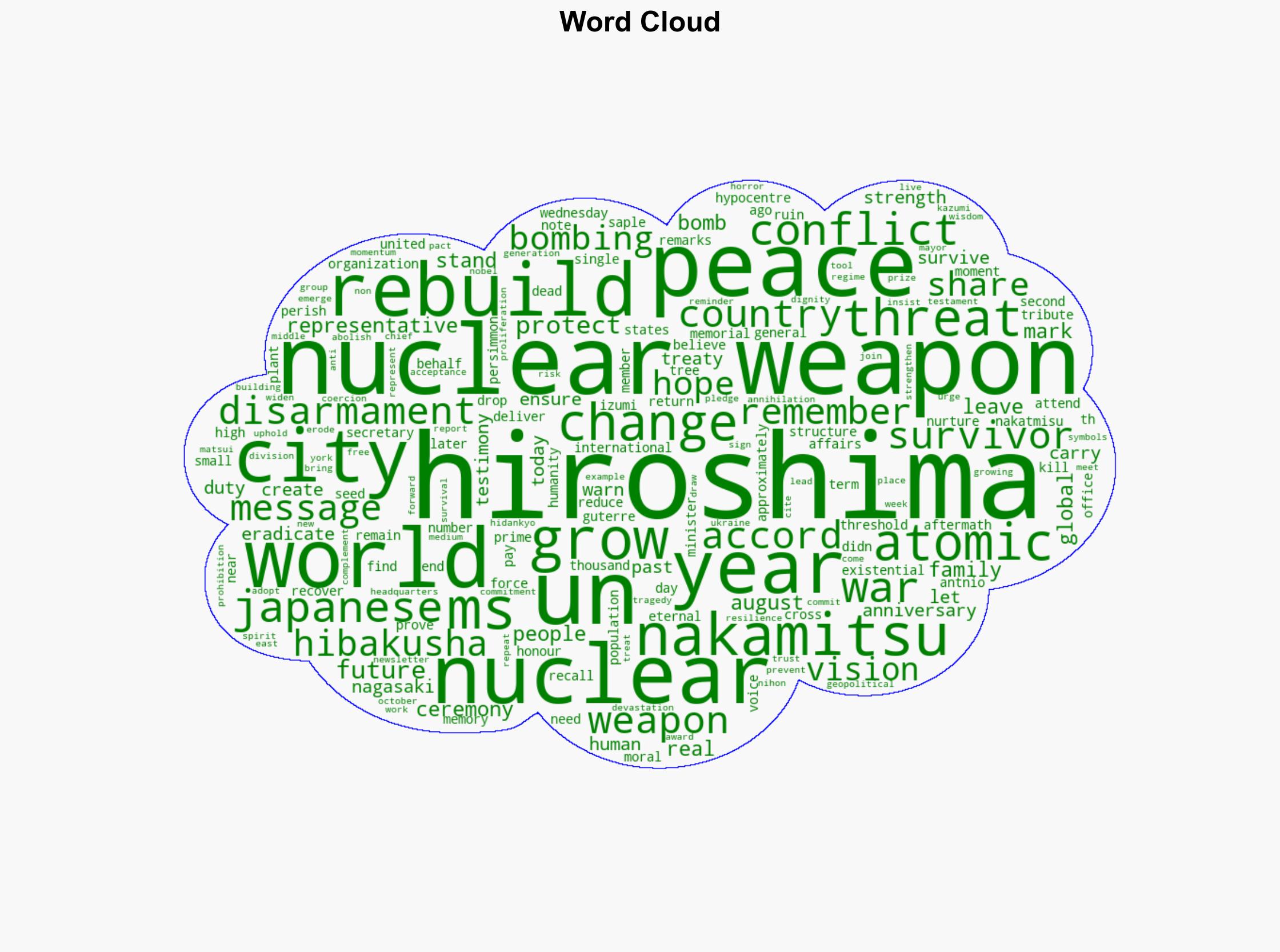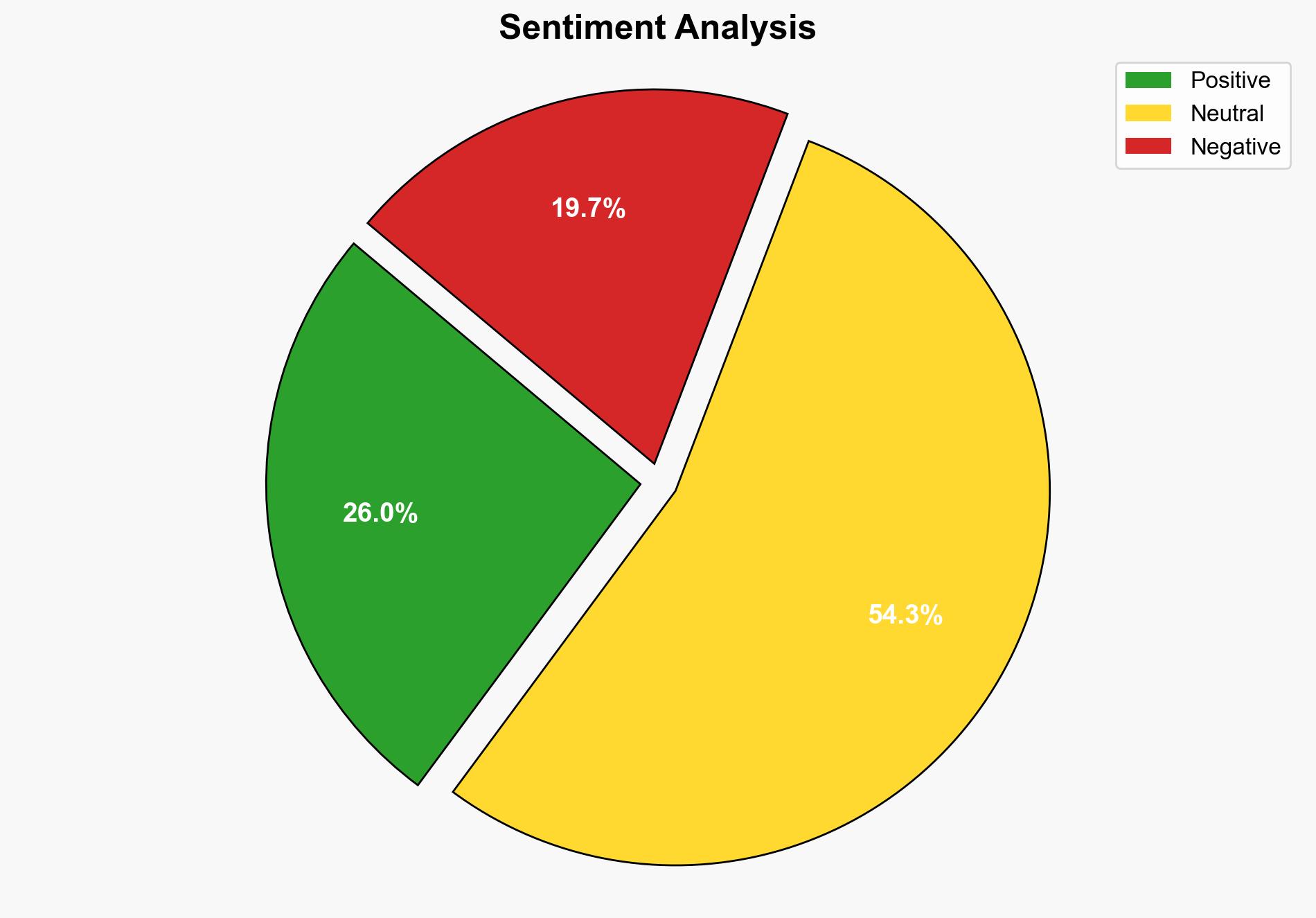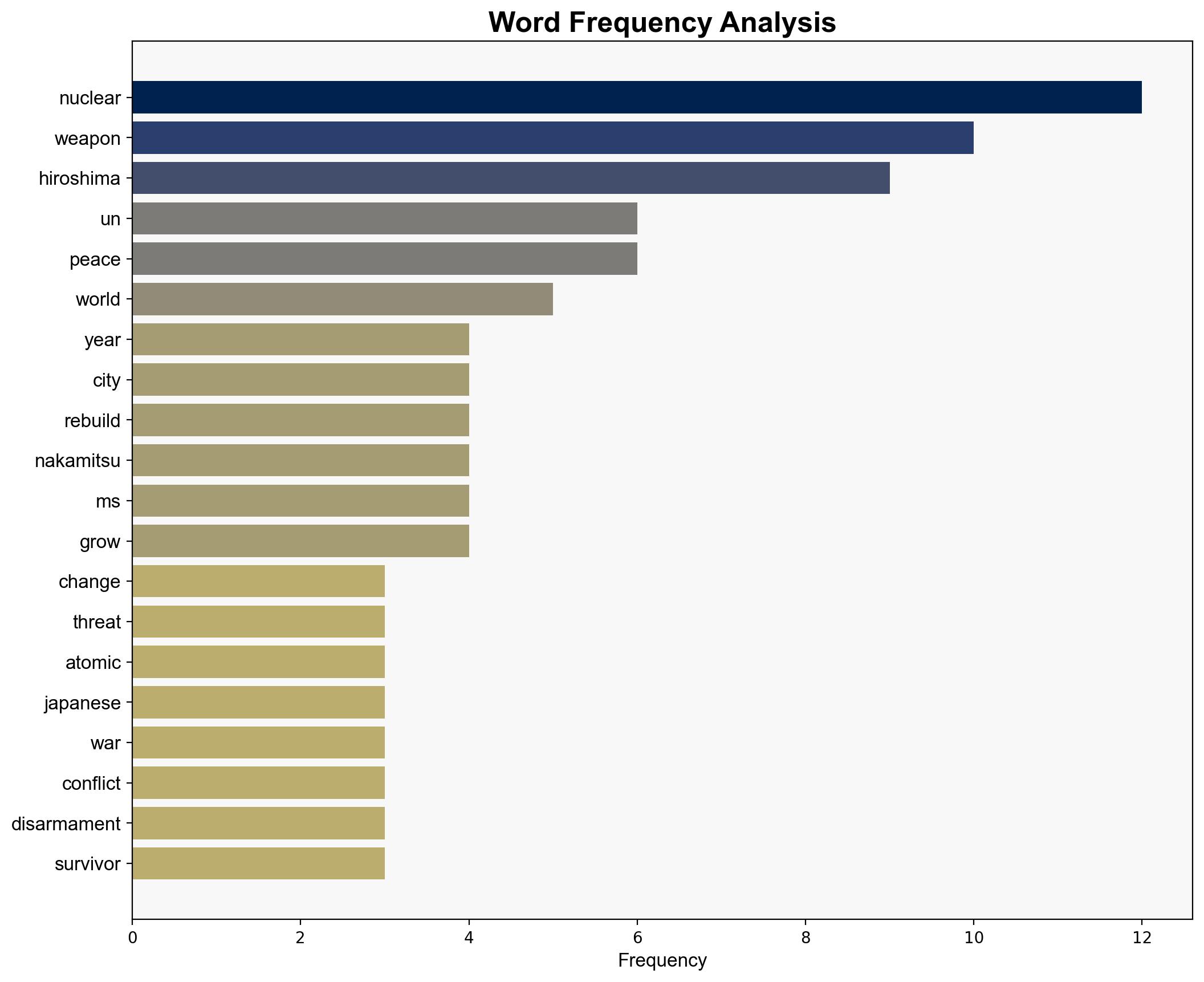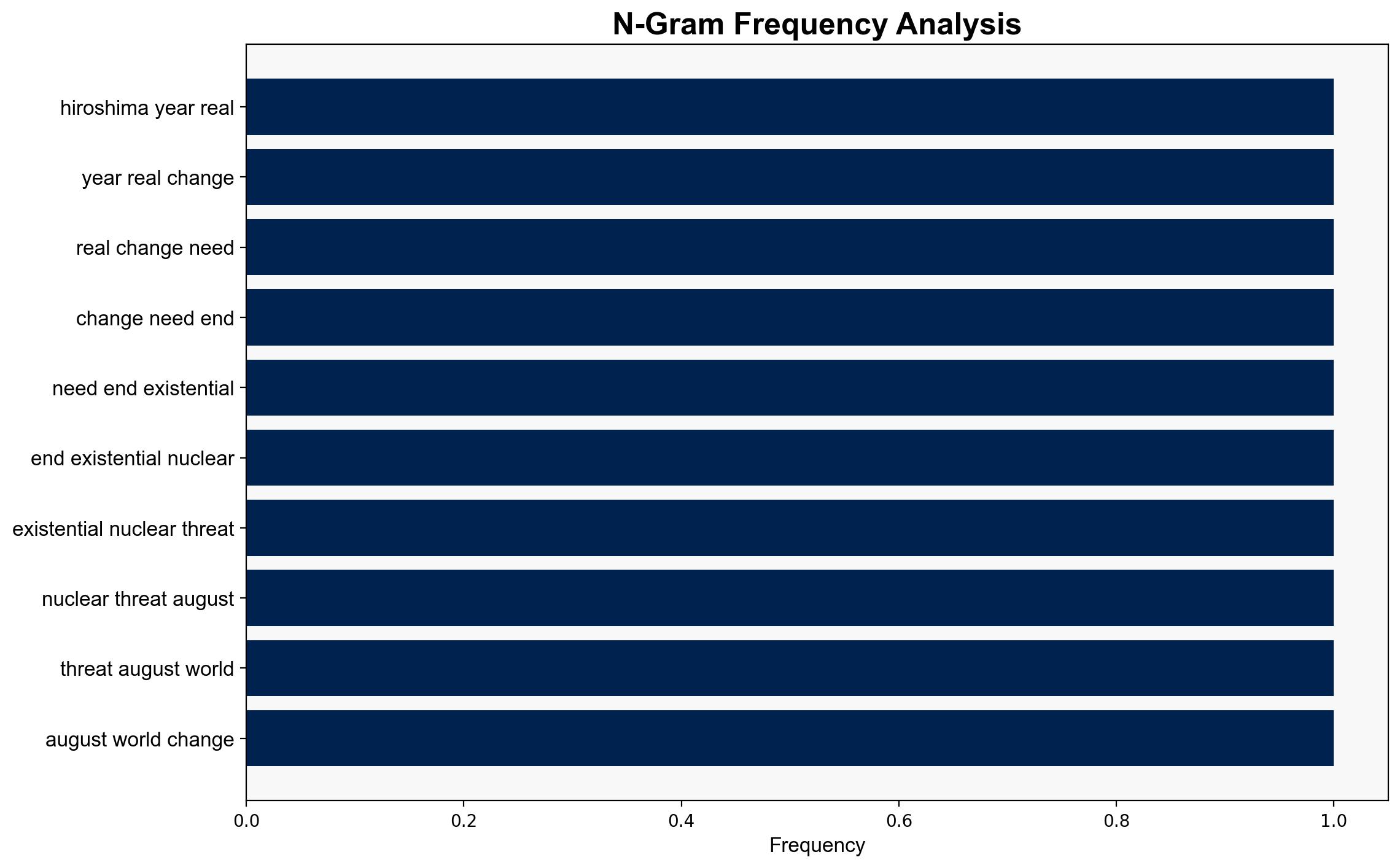Hiroshima 80 years on ‘Real change’ needed to end existential nuclear threat – Globalsecurity.org
Published on: 2025-08-07
Intelligence Report: Hiroshima 80 years on ‘Real change’ needed to end existential nuclear threat – Globalsecurity.org
1. BLUF (Bottom Line Up Front)
The strategic judgment indicates a moderate confidence level that global disarmament efforts require revitalization to effectively mitigate the existential threat posed by nuclear weapons. The hypothesis that international commitment to disarmament treaties will lead to significant progress is better supported. Recommended action includes strengthening diplomatic initiatives and enhancing treaty enforcement mechanisms.
2. Competing Hypotheses
1. **Hypothesis A**: Renewed international commitment to disarmament treaties, such as the Treaty on the Non-Proliferation of Nuclear Weapons (NPT) and the Treaty on the Prohibition of Nuclear Weapons (TPNW), will lead to substantial progress in reducing nuclear threats.
2. **Hypothesis B**: Geopolitical tensions and the erosion of trust among major powers will hinder disarmament efforts, maintaining or increasing the nuclear threat level.
Using the Analysis of Competing Hypotheses (ACH) 2.0, Hypothesis A is more supported due to recent international dialogues and commitments, despite ongoing geopolitical tensions.
3. Key Assumptions and Red Flags
– **Assumptions**:
– Nations are willing to prioritize global disarmament over regional security concerns.
– Existing treaties have the capacity to enforce compliance effectively.
– **Red Flags**:
– Rising geopolitical tensions, particularly involving nuclear-armed states.
– Lack of enforcement mechanisms in current treaties.
– Potential for non-state actors to exploit weakened international resolve.
– **Blind Spots**:
– Underestimation of technological advancements in nuclear capabilities.
– Overreliance on diplomatic channels without addressing underlying security dilemmas.
4. Implications and Strategic Risks
– **Patterns**: Increasing acceptance of nuclear weapons as tools of coercion in geopolitical conflicts.
– **Cascading Threats**: Potential arms race if disarmament efforts falter, leading to regional instability.
– **Escalation Scenarios**: Miscommunication or miscalculation in conflict zones could trigger nuclear exchanges.
– **Economic and Cyber Dimensions**: Economic sanctions and cyber warfare could be used to influence nuclear policy.
– **Psychological Dimensions**: Public fear and political pressure may drive policy changes towards disarmament or rearmament.
5. Recommendations and Outlook
- Enhance diplomatic efforts to strengthen and expand existing disarmament treaties.
- Develop robust verification and enforcement mechanisms to ensure compliance.
- Engage in confidence-building measures to reduce geopolitical tensions.
- Scenario Projections:
- **Best Case**: Global consensus leads to significant nuclear arsenal reductions.
- **Worst Case**: Breakdown of treaties results in a new arms race.
- **Most Likely**: Incremental progress with sporadic setbacks due to geopolitical tensions.
6. Key Individuals and Entities
– Izumi Nakamitsu
– António Guterres
– Kazumi Matsui
– Nihon Hidankyo
7. Thematic Tags
national security threats, nuclear disarmament, geopolitical tensions, international diplomacy





